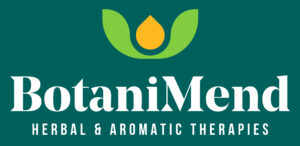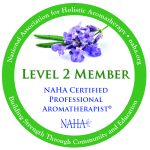Earlier in 2019, I wrote a blog article concerning experiential evidence vs. scientific research-based evidence. In that article, I laid out the basic fact that in herbal and aromatic medicine experiential, reproducible-for-hundreds-of-years evidence is the gold standard, relegating scientific research-based evidence to the role of “confirmation.” (You can read that article here: https://wholearomatherapies.com/empirical-evidence-vs-scientifically-research-based-evidence-in-aromatherapy-and-herbalism/). This, of course, does not mean that we do not pay attention to scientific research-based evidence, as long as that evidence is valid and the studies are properly conducted. However, we also need to understand the basic types of studies that are being conducted in the scientific world with regard to plants and plant extracts. Understanding the validity of each type of study, and knowing why and in what way they are useful can go a long way in understanding if a study is just something interesting that warrants inclusion into our practices or if it is something to which we really need to stand up and take notice.
The Use of the Term “Evidence-Based” for Validation
The term “evidence-based” is frequently tossed around (particularly in aromatherapy circles these days) in such a way that an impression is made that only information that has “scientific” backing is valid; or that information must have scientific backing in order to have strong validity. This, of course, means that in order for information to be “evidence-based” there must be some mention of research conducted on that information, no matter the type. But there is a misconception that all types of research are valid confirmations, and a number of authors have fallen into the trap that if there is scientific research studies conducted, they are “proof” that the substance in question is useful in some sort of way in practice. This is a problem.
Types of Scientific Research Studies
There are three main types of research studies conducted on various herbs and aromatics (and pharmaceuticals for that matter). They are as follows:
In Vitro Studies
In vitro studies are basically studies conducted in a petri dish. Tissue is sometimes used in these studies, as well as many other substances, but it is important to note that in vitro studies take place outside the living body.
Unfortunately, I have seen many an author quote these types of studies as validation for various claims for the workings of an herb or plant extract as if the findings of the research can be applied to the animal or human body. This is in error because this shows that the author of such a claim does not fully understand the purpose of in vitro research.
So, then, what is the purpose of in vitro research? The main purpose of in vitro research is thus: to find out if anything interesting can be discovered with respect to the properties of a substance such that it warrants further study. That is all. Nothing more, nothing less. It tells us nothing about how the substance will behave in the animal or human body. Nothing. It just provides a clue that it might be interesting enough (or not) to be studied further in the animal body.
In Vivo Animal Studies
In vivo animal studies are studies that are conducted on a substance inside the bodies of animals. Rats and rabbits are most often used for these studies, but other animals may be used as well.
Again, I’ve seen authors quote these studies as if they are validation for the claims of the workings of the herb or plant extract inside a living animal that fully translates to the human body. And, again, this is in error. Just because a substance behaves both pharmacokinetically and pharmacodynamically a certain way in an animal body does not mean that it will behave the same way in the human body. It only give us a clue.
So, then, what is the purpose of in vivo animal research studies? The main purpose of in vivo animal studies is thus: to find out if the pharmacokinetics and pharmacodynamics observed in the animal body are interesting enough to warrant further study in the human body. That is all. Nothing more. We only get a clue as to how the substance might behave in the animal body and how the animal body acts on the substance. But this does not tell us that the behaviors will be the same in the human body. In vivo animal studies help researchers to decide if human trials are worth conducting.
In Vivo Human Studies
Obviously, in vivo human studies are the gold standard for scientific research. The key is understanding the many aspects about the studies. One of the big keys for aromatherapy and herbal studies is: is the study conducted on a component of the plant substance under study or the whole plant? If the former, the information becomes “interesting” to us but not necessarily fully valid since the plant substances are composed of hundreds of varying chemical compounds which often cause the whole substance to behave differently than the isolated substance.
Another key is to understand the level of evidence to which the study is attempting to attain. Randomized controlled studies (RTCs) are king in human studies. They provide us the best evidence of the behavior of the substance in question.
Understanding the Placement of the Studies in Evidence
If we were to draw a pyramid with the strongest evidence on top and the weakest evidence on the bottom, we would find the following:
Very Top: RCT from many studies with a systematic review by meta-analysis
Next to Very Top: RCT from at least one study
This is followed by cohort studies, case-control studies, case series and reports, and editorial notes/expert opinions.
Do you know what the bottom looks like?
Next to Very Bottom: In vivo animal studies
Very Bottom: In vitro studies
It is imperative to understand two things with regard to research:
- Non-human research is considered pre-clinical and, therefore provides no clinical evidence for human beings
- In the medical sciences and among the medical community, in vitro and in vivo animal studies are not considered evidence nor are they considered to be a contribution to evidence-based medicine. Evidence-based medicine is only considered valid if humans have been subjects of the study.
If there are only two things you learn from what I have written here, these are the two. Memorize them. Commit them to long-term memory in any way you can because they are very important.
The Lowest Common Denominator
Aromatherapy (and not too long ago, herbalism) has sought very hard in the last 5 years to attempt to validate itself through scientific research studies. I talk about this in more detail in my previous writings mentioned in the introduction. In that attempt to gain a greater measure of validation, a number of authors have consistently provided information about research studies in their works that are mostly in vitro and in vivo animal studies so as to demonstrate that there is validity to the medicinal properties of the substance in question; and some have gone so far as to use constituent studies of the same to make that connection. Unfortunately, both in the aromatherapy world and in the herbal world there are few human studies; and of those human studies there are very few that are usefully valid.
If you have not realized it by now, you need to understand this:
When the Phytotherapy community determines that validation of the properties of a plant substance are to be made from in vitro and in vivo animal study research they are using the lowest form of “evidence” to state their claims and, as such, in an attempt to provide validity they are actually taking away from those claims of validity. Why? Because….
- Non-human research is considered pre-clinical and, therefore provides no clinical evidence for human beings
- In the medical sciences and among the medical community in vitro and in vivo animal studies are not considered evidence nor are they considered to be a contribution to evidence-based medicine. Evidence-based medicine is only considered valid if humans have been subjects of the study.
So, none of this will be useful to the Phytotherapy community or the medical community as we work with them for a client health plan. The medical community is simply not going to accept these “validations”; and often one of the reason why we in the Phytotherapy community want these studies in because we are working with the medical community on a client health plan. They often will need some human research evidence before they will work with you as a partner because otherwise they could lose their license. So, the very validation we often seek for the very reason we seek it is not going to be valid anyway.
Conclusion
Please don’t get me wrong; there is a place for both in vitro and in vivo animal studies. But it is important that each and every one of us understand that place and the limitations of those studies. Writing about or studying a plant substance used in practice and then trying to validate it with in vitro or in vivo animal studies is both erroneous and improper. Everything has its place. And the place of both in vitro and in vivo animal studies is simply to understand if the results of those studies are interesting enough to conduct human trials. That is all. Nothing more. If we try to make it more than it is, then we are doing ourselves, our practices, and the Phytotherapy community at large a disservice.
Just like the medical community, we in aromatherapy and herbalism cannot and should not attempt to claim “evidence-based aromatherapy” or “evidence-based herbalism” with respect to scientific research unless human studies — and valid, proper human studies — have been conducted, because as mentioned above, only human studies are considered to be evidence when it comes to said studies.






